SHELTERED BY SOPRIS:
The Carbondale Story
Carbondale was a town that supplied the surrounding communities with the labor and materials that allowed them to thrive. Nearby Aspen and Glenwood Springs needed the labor, coal and potatoes produced in Carbondale to run their industries. Connected by rail, each town had its own individual character. Carbondale was the quiet place, less opulent than Aspen or Glenwood Springs, but with a collection of pioneer characters that set the stage for the independent attitudes that prevail here to this day. The spirit of the area was forged and shaped by many groups and Carbondale’s story has many chapters:
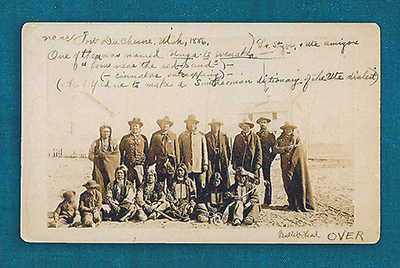
THE UTES
(Photo of Northern Utes from the Carbondale area who were displaced to Fort Deschan in Utah. Photo from the Smithsonian Collection)
Ute people once occupied a large portion of present-day western Colorado and eastern Utah. Their ancestors migrated into this area perhaps as long as 1000 years ago. In prehistoric times the Utes traveled on foot. They moved with the seasons on sacred trails, traveling in small family groups to hunt big game and harvest ripening plants. As they traveled, they built expendable shelters made from wooden limbs and poles covered with bark and brush, or animal skins. They possessed only what they could carry, yet all of nature was sacred to the Utes and their practical, efficient life ways had sustained countless generations of their ancestors.
In historic times, beginning in the 17th century, Ute groups throughout western Colorado began to adopt horse culture and other European influences. Their nomadic way of life flourished with the mobility of the horse, and for more than a century they were a dominant presence in the mountains of western Colorado. But as American settlers flooded into the Colorado Rockies in the mid-1800s, the Utes' traditional hunting and gathering life ways began to disappear. In 1881 the last northern Colorado Utes, including those in the valleys of the Crystal and Roaring Fork Rivers, were banished to reservations in the deserts of eastern Utah.
In historic times, beginning in the 17th century, Ute groups throughout western Colorado began to adopt horse culture and other European influences. Their nomadic way of life flourished with the mobility of the horse, and for more than a century they were a dominant presence in the mountains of western Colorado. But as American settlers flooded into the Colorado Rockies in the mid-1800s, the Utes' traditional hunting and gathering life ways began to disappear. In 1881 the last northern Colorado Utes, including those in the valleys of the Crystal and Roaring Fork Rivers, were banished to reservations in the deserts of eastern Utah.
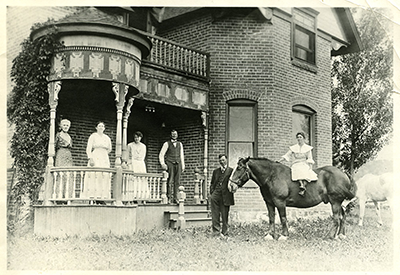
THE HOMESTEADERS
Beginning in 1881, the land in and around Carbondale was opened up to homesteaders. Many of Carbondale’s early pioneers arrived at that time, seeing the opportunity to acquire land for farming and ranching. The early town site was formed when a group of businesspeople, The Carbondale Land Company, purchased four ranches from various individuals and subdivided the land into building sites which now form the core of the downtown area. Incorporated on April 26, 1888, the town already had its own newspaper (“The Carbondale Advance”) and several square blocks of building sites. William H. Dean was elected the first mayor. William Dinkel, known as the “Father of Carbondale” opened a bank in that year, and thirteen saloons were in business here.
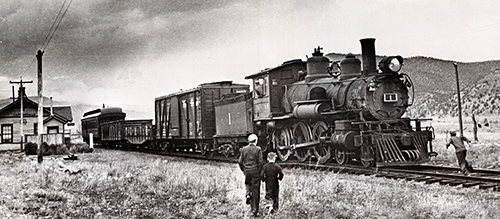
THE RAILROADS
Many railroad lines passed through Carbondale including The Denver and Rio Grande, the Colorado Midland, the Elk Mountain Railway and the Crystal River and San Juan Railroad. Railroad workers filled the town, more than 500 of them, to build the Denver & Rio Grande tracks to Aspen. Although the tracks have been removed, the old depot remains standing on Colorado Avenue, just across from City Hall.
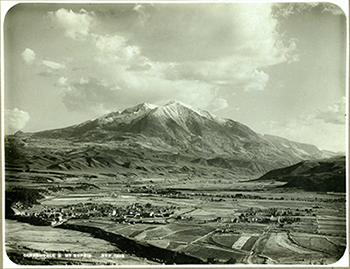
THE MOUNTAIN
At 12,953 feet, Mount Sopris is the main feature of Carbondale’s southern landscape. It is part of the Elk Mountain Range and has two distinct summits located a half mile apart. Mount Sopris rises higher from base to peak than any other mountain in Colorado, more than 6700 feet above the valley floor. The mountain was named after Captain Richard Sopris, who visited the area in 1860 on a mapping and gold exploration trip. The group traveled only as far as the base of the mountain, which they named “Sopris Peak” in honor of their expedition’s leader. The details that his group collected while exploring this area were used in creating the first maps of the Colorado Territory. Richard Sopris went on to be mayor of Denver and to serve for one year in the Civil War. Although it is not located within the city limits, Mt Sopris has been adopted by Carbondale as its own, as it is visible in all its glory from almost every spot in town.
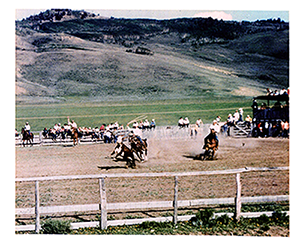
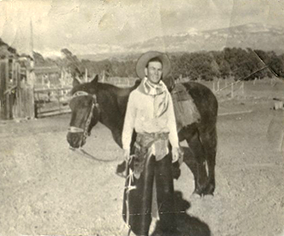
THE COWBOYS
Ranching has been part of Carbondale history since its earliest days, and the town is still known for its working cowboys, cattle drives, and prizewinning livestock. The Carbondale Roping Club, formed in 1948, held regular rodeos near the site of the Log Cabin Museum, and the rodeo tradition continues every summer, with Thursday night events that are a local tradition.